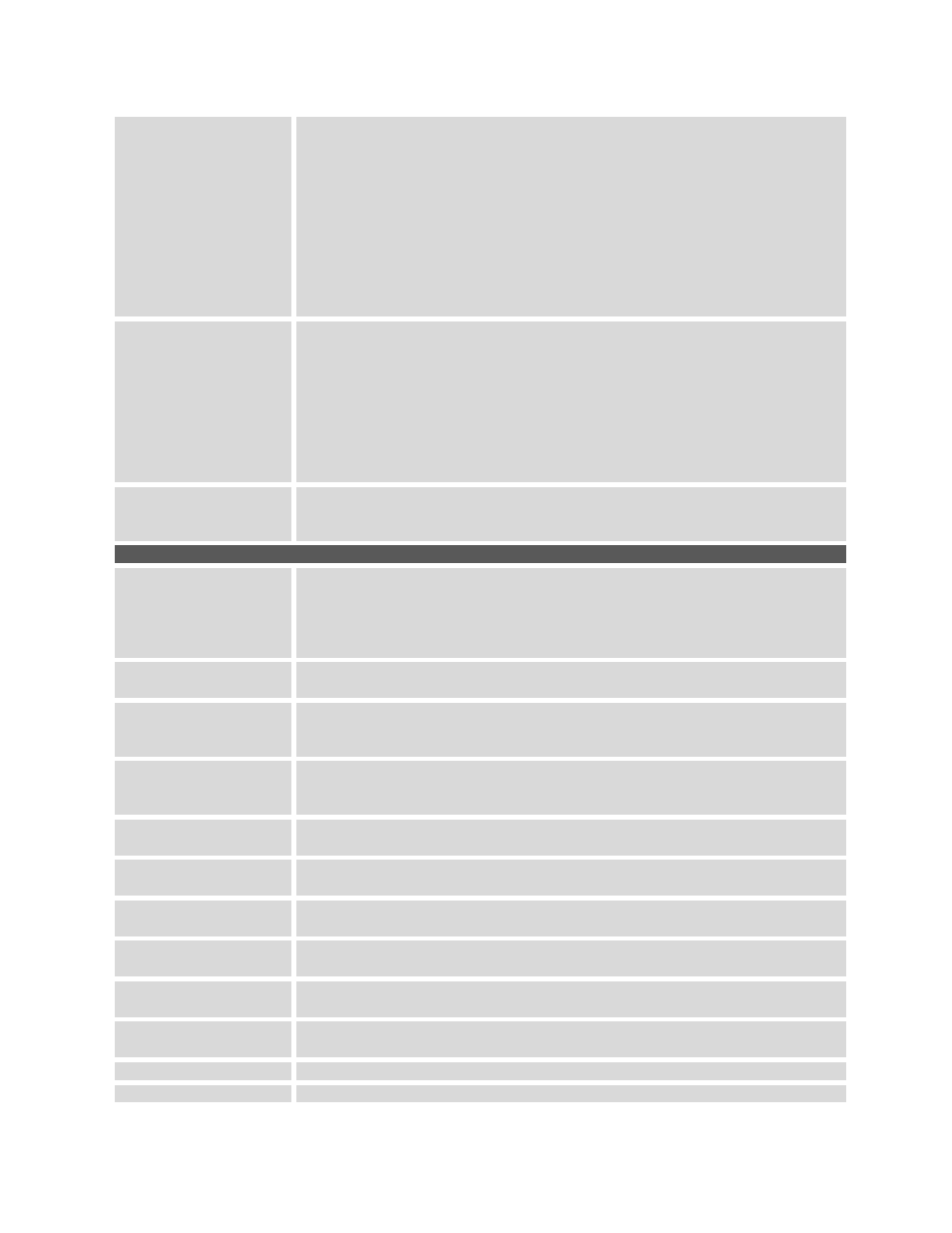Grandstream GXP1610 Administration Guide User Manual
Page 24

GXP1610/GXP1620/GXP1625/GXP1628
Administration Guide
Page 23 of 49
Primary IP: The primary IP address where the phone sends DNS query
to;
Backup IP 1;
Backup IP 2.
If SIP server is configured as domain name, phone will not send DNS query,
but use “Primary IP” or “Backup IP x” to send SIP message if at least one of
them are not empty. Phone will try to use
“Primary IP” first. After 3 tries
without any response, it will switch to “Backup IP x”, and then it will switch
back to “Primary IP” after 3 re-tries.
If SIP server is already an IP address, phone will use it directly even “User
Configured IP” is selected.
NAT Traversal
This parameter configures whether the NAT traversal mechanism is activated.
Users could select the mechanism from No, STUN, Keep-Alive, UPnP, Auto
or VPN. If set to
“STUN” and STUN server is configured, the phone will route
according to the STUN server. If NAT type is Full Cone, Restricted Cone or
Port-Restricted Cone, the phone will try to use public IP addresses and port
number in all the SIP&SDP messages. The phone will send empty SDP
packet to the SIP server periodically to keep the NAT port open if it is
configured to be
“Keep-Alive”. Configure this to be “No” if an outbound proxy
is used.
“STUN” cannot be used if the detected NAT is symmetric NAT.
Proxy-Require
A SIP Extension to notify the SIP server that the phone is behind a
NAT/Firewall. Do not configure this parameter unless this feature is supported
on the SIP server.
Account x -> SIP Settings -> Basic Settings
TEL URI
If the phone has an assigned PSTN telephone number, this field should be
set to
“User=Phone”. Then a “User=Phone” parameter will be attached to the
Request-Line and
“TO” header in the SIP request to indicate the E.164
number. If set to
“Enable”, “Tel:” will be used instead of “SIP:” in the SIP
request. The default setting is
“Disable”.
SIP Registration
Selects whether or not the phone will send SIP Register messages to the
proxy/server. The default setting is
“Yes”.
Unregister Before New
Registration
If set to
“Yes”, the SIP user’s registration information will be cleared when the
phone reboots. The SIP Contact header will contain
“*” to notify the server to
unbind the connection. The default setting is
“No”.
Register Expiration
Specifies the frequency (in minutes) in which the phone refreshes its
registration with the specified registrar. The default value is 60 minutes. The
maximum value is 64800 minutes (about 45 days).
Reregister Before
Expiration
Specifies the time frequency (in seconds) that the phone sends re-registration
request before the Register Expiration. The default value is 0.
Enable OPTIONS Keep
Alive
Select whether or not the phone will keep sending a message to check the
connection with the server.
OPTIONS Keep Alive
Interval
Specifies the frequency (in second) in which the phone will send the Keep
Alive message to the server.
OPTIONS Keep Alive
Max Lost
Specifies the maximum number of allowed lost packet before the phone will
refresh its registration.
Local SIP Port
Defines the local SIP port used to listen and transmit. The default value is
5060 for Account 1 and 5062 for Account 2.
SIP Registration Failure
Retry Wait Time
Specifies the interval to retry registration if the process is failed. The default
value is 20 seconds.
SIP T1 Timeout
SIP T1 Timeout. The default setting is 0.5 seconds.
SIP T2 Timeout
SIP T2 Timeout. The default setting is 4 seconds.
